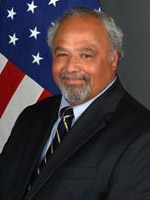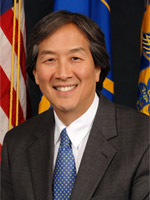World AIDS Day Federal Conference Call: Voices of Senior Leaders, Staff, and Grantees
Last week we sponsored a World AIDS Day conference call for Federal staff and grantees who work on HIV/AIDS issues. Speakers on the call included senior HIV leaders from the White House and the Departments of Health and Human Services, Housing and Urban Development, State, and Veterans Affairs. Approximately 900 sites worldwide (representing well over 1,000 listeners) took part in the call. Today I want to share some highlights from the call along with information about how we integrated more traditional and new media into the planning, promotion, evaluation, and product development from the call.
What were the key messages from the call?
Dr. Koh also noted several recent accomplishments, among them the revitalization of the President’s Advisory Council on HIV and AIDS (PACHA), the reauthorization of the Ryan White Program, and the elimination of the entry ban for HIV positive travelers and immigrants.
Dr. Howard Koh, HHS Assistant Secretary for Health, started the call by saying "this is an opportunity for all of us to hear an update on the HIV/AIDS epidemic both in the U.S. and globally, and for us to engage in a dialogue about the challenges we face as we work together to respond to HIV/AIDS." He noted that the theme for this year’s World AIDS Day is “Working Together” and said, “we are working together particularly in this new administration both domestically and internationally to share best practices and to improve the lives and health of those we serve.”

Ambassador Eric Goosby, U.S. Global AIDS Coordinator and Ambassador at Large
Dr. Kevin Fenton, Director of the National Center for HIV, STD, and TB Prevention
Ambassador Eric Goosby, U.S. Global AIDS Coordinator and Ambassador at Large for the President’s Emergency Plan for AIDS Relief (PEPFAR), also emphasized the “Working Together” theme, saying that, “the ability to mount an effective response has always been realized through the concerned effort of government, non-governmental organizations, community based organizations in partnership with patients and people who are infected, affected by HIV/AIDS. It’s this collaborative effort that holds everybody to the task. It allows us to further point and direct our programs so they effectively address the needs of what is a changing population and community.”

We also heard from Dr. Kevin Fenton, Director of the National Center for HIV, STD, and TB Prevention at the CDC, who spoke of the domestic situation and emphasized the need for all Americans to know their HIV status. “I envision and am committed to a day,” he said, “when HIV testing becomes as standard as a blood pressure check in the United States.”
Mr. David Vos from U.S. Deparment of Housing and Urban Development, Dr. Deborah Parham Hopson from HRSA, Dr. Carl Dieffenbach from the National Institutes of Health, Ms. Beverly Watts Davis from SAMHSA, Dr. Ron Valdiserri from Department of Veterans Affairs, and Mr. James Albino from the Office on National AIDS Policy took many of YOUR questions on a variety of topics. Some questions brought up the important issues of stigma, Federal collaboration, incarceration, funding, communities of color, housing opportunities for people living with HIV, and Medicaid. Hearing and responding to YOUR concerns was the major portion of this hour and a half call.
Mr. Albino and Dr. Parham Hopson offered key insights into the importance of this World AIDS Day—December 1. Then Mr. Christopher Bates, Director of the Office of HIV/AIDS Policy, wrapped up the call with a reminder that “the domestic HIV response is a key public health issue” and reiterated that “we hope to strengthen both international and domestic response to a scale that makes a very serious and lasting impact on the epidemic.”
Given all the technology available, why did HIV.gov decide to do a conference call?
We wanted to dedicate time to hearing live questions and voices from those of you implementing HIV programs, versus hearing lengthy prepared remarks. Using the phone kept things more conversational and simple—for example, it meant we did not need to develop graphics or power point presentations. I mention this because it’s important to know when to and not to use new media.
In our case we used a more traditional technology for the actual event, but new media tools helped us market the event and extend its reach. We’ve spun off some new media products, like this blog post, and we’ve provided the audio podcast and the transcripts of the call. Our hope is that in repurposing an old tool, the dialogue will be shared as we approach World AIDS Day 2009—just a week away!
Looking for ways to get involved for World AIDS Day?
Visit HIV.gov’s World AIDS Day page—it’s not too late to add yours!
